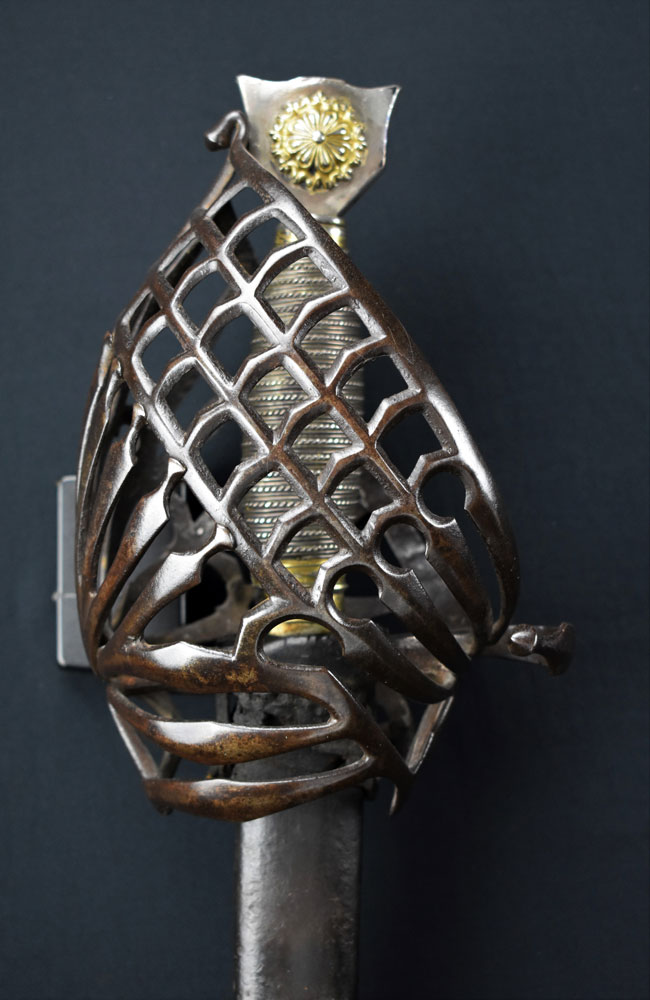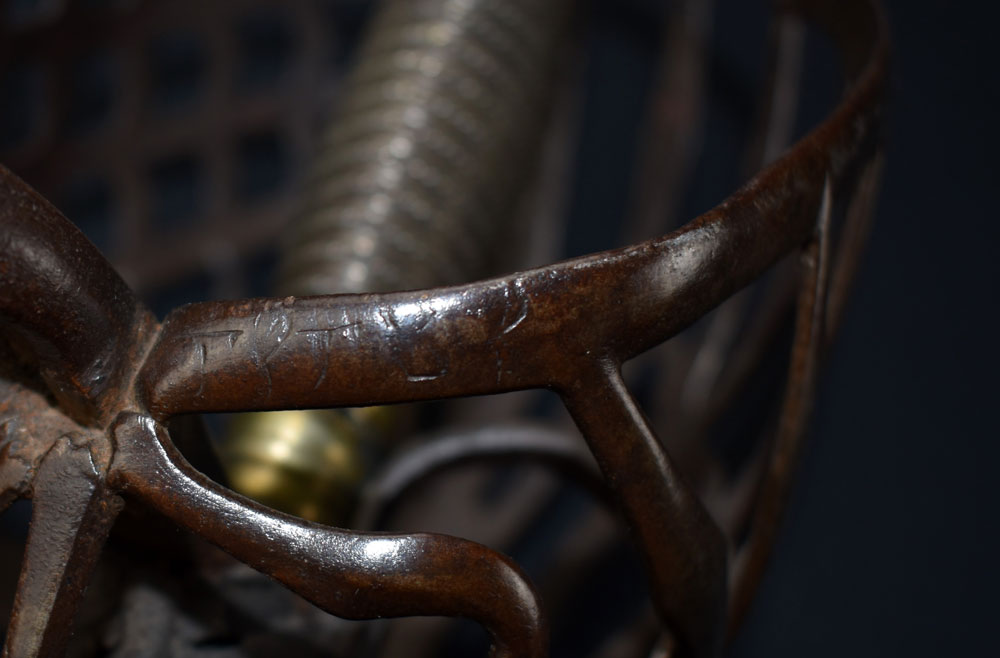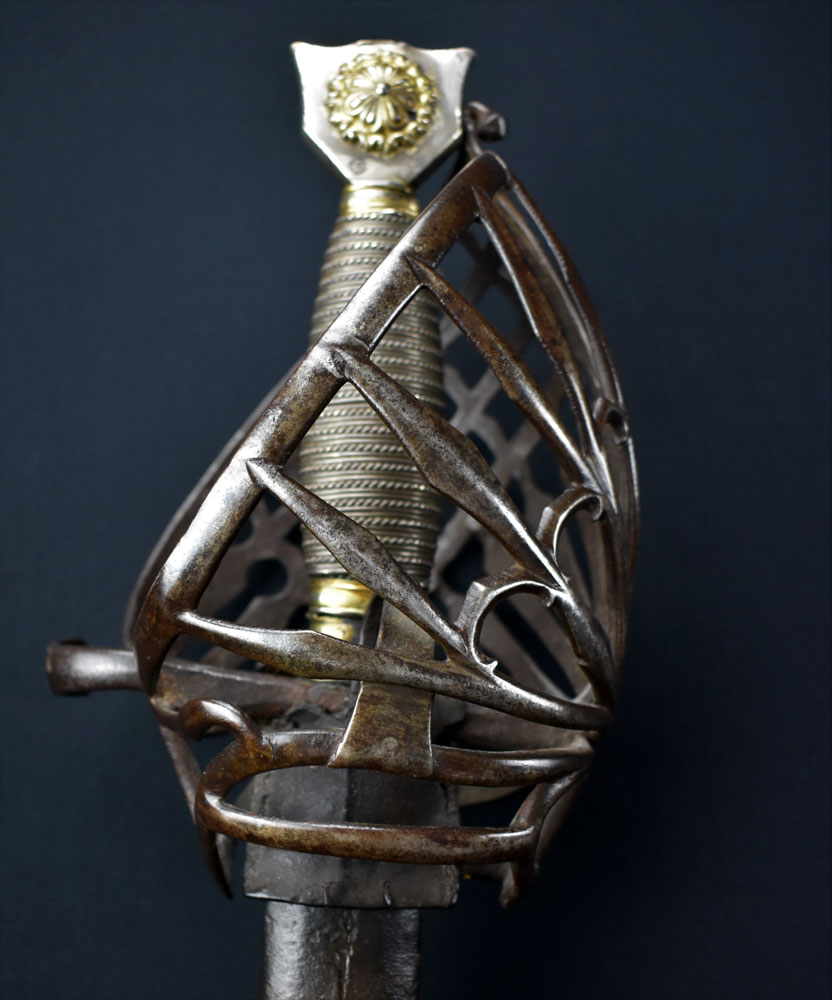Focus Article: On Four Venetian Schiavona
A Brief History of the Region:
In this article we will take a brief look at four fascinating Venetian Swords. Each one represents a different phase in the evolution of the Schiavona and each is an exceptional example of its type.
Schiavona is the name associated with a fascinating and distinct line of swords that originated and were produced in Venice from the last quarter of the 16th century to the last decade of the 18th century. They were carried by Slavonian, Dalmatian and Croatian mercenaries often known to collectors as the ‘Schiavoni’. These battle-hardened men were employed as both guards to the Doges of Venice and essentially comprised the standing army for the Venetian Republic.
The warriors of Slovenia, Croatia and Dalmatia were from countries in the Balkan region that fell under the influence of the Venetians, the Austro-Hungarian Habsburgs and the Ottomans. They were battle hardened by centuries of war and occupation. International conflicts between the Ottoman’s and Venetian’s, as well as the Ottoman’s and the Habsburgs saw the fighting men of these countries align themselves for both money and the common religion of Catholicism, with the Venetians and the Austro-Hungarians.
Being countries that experienced conflict and occupation for centuries they were breeding grounds for soldiers that were driven by need and practicality. It is no wonder that here like many other fringe societies the basket hilt was prevalent as their sword of choice. They were highly usable and eminently practical. The majority were of working man’s quality, which meant the baskets and pommels were relatively crude, but when mounted were well balanced, functional and almost invariable paired with a quality blade. The vast majority of Schiavona are mounted with broadsword blades.
Before we take a look at our four swords, let’s quickly take a glimpse at what was happening to the swords of the 16th century and the place these basket hilts occupy within the chronology of swords.
Swords of the Renaissance Period:
Sword development went through an incredible evolutionary stage during the Renaissance period in Europe; when art was flourishing, gun powder driven weapons were quickly developing, and armour was both reaching its peak as well as heading into its decline.
For centuries, up until c. 1400, European swords were simple well-balanced cutting and thrusting weapons that were predictably hilted with very simple guards. They were most often cross-hilted guards and the variations were largely seen in the pommels, blade styles and sword sizes.
As the 15th century progressed swords started to change. Sabre blades were now common in the Eastern European Borderlands, that had been heavily influenced by the Ottoman Turks. Estocs and purely thrusting weapons were proliferating, and still simple but additional guards were now being added to the hilts.
In the 16th century the sword’s evolutionary tree bloomed. Where the sword for centuries had a foundation of solid simplicity, now it flourished as regional art and form of expression.
Branches in the evolutionary tree, for knights, infantrymen and civilians grew everywhere. The rapier emerged in all of its many forms and it lead the sword trade into the world of Renaissance art.
Riding swords, bastard swords, two-handed swords, falchions, estocs and basket hilts are but a sampling of the names used to describe the different categories of sword flourishing on the Continent and the British Isles in the 16th century.
During the European Renaissance the sword was forever changed and more was to come. Throughout the 17th and 18th centuries it continued to evolve and find its ever-changing place in contemporary warfare and civilian life.
The Schiavona:
The Schiavona is one the earliest and most enduring line of the basket hilts to develop in Europe during the second half of the 16th century.
Basket style guards were developing regionally and while evolutionary connections can be made in some structural configurations, it is my belief that the greatest connection is simply in its form and function as a weapon of war. The European infantry and some cavalries of the day saw the eminent practicality of a high quality, single handed broadsword or backsword, mounted with a steel cage that fully encapsulated and protected the hand.
Where the swords differed were in the cultural interpretation of the guard’s style. The Venetian Republic was a cultural powerhouse of Renaissance art and architecture. It is not surprising that of all the basket guards in Europe at the time, this is one of the most beautiful and iconic to emerge.
Like many other basket hilts, the evolution of the schiavona can be measured by the number of bars and the growing complexity of its construction. The earliest schiavona already displays its signature ovoid form and is comprised of interlinked bars that provide significant coverage to the outside and reasonable protection to inside of the hand. But compared with later examples it is simple and comprised of far fewer welded bars.
Sword # 1;
A Very Rare 16th Century Schiavona:
Our first example is what I believe to be the earliest of its type that I have ever had the pleasure of studying, and I would date it within the chronology to the third quarter of the 16th century. A very rare sword indeed.
The chiselled steel hilt is simple and beautiful. As the armourers in Venice were likely experimenting with their own take on the basket guard, this form emerged. It was both effective as well as beautiful and inspired many generations to come.
The backsword blade, with unidentified armourer’s marks, is indicative of the swords rank and quality, as it has been my observation that backsword blades were more often mounted to the finer quality hilts than their broadsword counterparts. My hypothesis for this is that the mounted man favoured the single edged cut and thrust blade for its usability while on horseback, and that being mounted as opposed to being on foot indicated a higher rank and level of wealth.
The pommel is a beautifully cast in brass of a neo-classical lion’s head mask with small red stones set in the eyes. The style of and quality of this pommel is another feature indicating the age of the sword, as the neo-classical lion’s head mask is very typical of Italian Renaissance motifs and is common on many types of arms and armour manufactured in the late 16th century.
The majority of schiavona are of ‘working man’ quality and have simple often crude steel pommels. Non-ferous pommels tend to indicate a higher quality overall and are presumably for the officers of the Schiavoni. Like any other army the higher the rank, the better the weapon and we can see this in the fact that best Schiavona are furnished with some very nicely cast and finished pommels.
Place of Origin: Venice
Date: c.1580
Overall Length:
Please see the Rossarms.com gallery for more photos of this beautiful sword.
Sword # 2;
A 17th Century Schiavona for the Chief of the Clan Fergusson:
This sword is from the armoury of the Palazzo Ducale in Venice and bears the remnants of the armoury mark (the Lion of St. Mark) on the upper bar of the hilt. It is an early armoury sword of standard quality, with a steel pommel and well executed hilt, classified by Ewart Oakeshott as Type 1.
The broadsword blade, with the Christogram IHS as the armourers mark is likely Venetian made. The forte of the blade bears the coat of arms for the Scottish Clan Fergusson of Glenshellish, Stra-Chur, Argyllshire and is dated 1611. It is this identification that makes this sword truly special and also indicates that the sword itself predates 1611.
The sword belonged to Iain Ciar McKerras, heritable Mair of Glenshellish, Stra-Chur, Chiefs of the earliest Clan Fergusson and close ally of the then Earl of Argyll. How he obtained a Venetian sword is unknown, but these swords were not unheard of in the highlands of the period and would have made a very exotic piece upon which to memorialize the family’s coat of arms and to be carried by the Chief of a Clan. In fact in 1611 King James the 1st & 6th of England and Scotland sold the title of Baronet as a means to raise funds. It is plausible that it was at this time that the Chief bought or was given this title by the Earl and that this was a newly minted Coat of Arms for this particular Fergusson Clan.
The sword passed down through many generations in the family of the “original” Chiefs of Clan Fergusson in Stra-Chur, Argyllshire and stayed in the family well after they had lost the title and sold the family estate of Glenshellish. The last of this family’s male line died at the Explorer’s club in Manhattan in 1961. It was almost certainly the last heir Seamus Fergusson, who having approven his line and Coat of Arms with the Court of Lord Lyon in 1940, had this sword cleaned and the Coat of Arms restored by re-chiselling many of the lines. It is very unfortunate from my point of view that he did nit leave the sword untouched, but he viewed it as a family heirloom and a prized possession as opposed to a collectible artifact. For additional information on this family and sword see attached file.
Place of Origin: Venice
Date: c.1600
Overall Length:
Please see the Rossarms.com gallery for more photos of this beautiful sword.
Sword # 3;
A Beautiful 18th Century Schiavona, Bearing the Arms of Charles VI; Holy Roman Emperor:
This is a very fine example of its type and has survived in lovely condition. The broadsword blade of exceptional quality. It is etched and gilded throughout the entire length of the blade and bears the Arms of Charles the 6th, Holy Roman Emperor, King of Bohemia (as Charles II), King of Hungary, Croatia, Serbia and the Archduke of Austria (as Charles III). Although known as a Venetian Sword is not uncommon to find Schiavona with blades bearing the cyphers of the Habsburg Monarchs. The Habsburg Monarchy had direct ties to the Venetian Republic (as did the Ottomans) and they both shared varying degrees of influence over the Balkan region and the Adriatic Sea.
The finely constructed hilt retains remnants of its original gold gilding in the fluting, which has been used to decorate the guard giving it a very pleasing appearance and denoting a high-quality sword. The hilt is Oakeshott type 2 and although it could be contemporary to the blade which is no earlier than 1711, it may also be a re-bladed hilt that could predate the blade by as much as 50-75 years. The practise of re-hilting blades or re-blading hilts is common in the evolution of swords and is representative of a need to recycle and repurpose expensive and quality goods as well as a period when weapons such as swords are cherished items that pass lovingly down through multiple generations of use. The pommel is commensurate in quality and is cast in bronze of a fiercely moustachioed mask. This sword is published in; ‘European Weapons and Armour’, by Ewart Oakeshott.
The Schiavona’s connection with lands east of the Adriatic goes back several centuries before this sword was made. The Croats, Slovenians and Dalmatians were hired in large numbers by the Venetian Republic, which as a maritime power had no land-base on Italian soil to draw large numbers of recruits from. Venice gradually gained de facto control of much of Croatia (the city of Dubrovnik was called Ragusa) and the region's cultural leanings towards Italy lasted all the way until World War II when the Croats allied with Mussolini. I think the shared Catholic faith accounts for a lot of it, since Croats along with Slovenians have had to exist surrounded by Eastern Orthodox and Muslims for centuries, sometimes on unfriendly terms. Croats, Slovenians and Dalmatians continued to serve as mercenaries well into the basket-hilt era. Eventually, though, Venice's hold over the region waned as the Habsburg Monarchy grew more powerful and it consolidated its hold on the Balkan region.
Place of Origin: Venice
Date: c. 1711 - 1740
Overall Length:
Please see the Rossarms.com gallery for more photos of this beautiful sword.
Sword # 4;
A Superior Late 18th Century Schiavona:
The last sword to be showcased in this article is a very fine Venetian Schiavona in excellent original condition. The Hilt is elegantly forged into an organic, web like basket which wears a rich brown patina. The basket was likely browned originally and has deepened with age. The grip and pommel are gilt silver, with hallmarks on the pommel. The pommel is well above the average schiavona pommel, it is cast in solid silver with a gilt rosette as the central boss. The broadsword blade is signed GIO KNECT; IN SOLINGEN, most likely the work of Johann Knecht of Solingen c.1727-1797, intended for the Venetian and/or Italian markets. The sword retains its original scabbard and scabbard cover attached to the underside of the quillon block. Both are beautifully executed and are rare survivors for a sword of this age.
Oakeshott classifies this as a Type 2B hilt which he believes was fully developed as a form between 1740-1780. This hilt marks the final stage of evolution for this iconic basket hilted sword and this hilt itself represents the finest quality of its type. Oakeshott also makes note in his book of an inscription on the back guard of a Type 2A. He believes the inscription to possibly be Russian and postulates that it may hold a clue as to the dating of these hilts. This sword bears and inscription that is very similar to the one shown in Oakeshott’s book. Any information on what this inscription may mean is welcomed via email to jeffrey@rossarms.com.
Place of Origin: Venice
Date: c.1750-1797
Overall Length:
Please see the Rossarms.com gallery for more photos of this beautiful sword.












